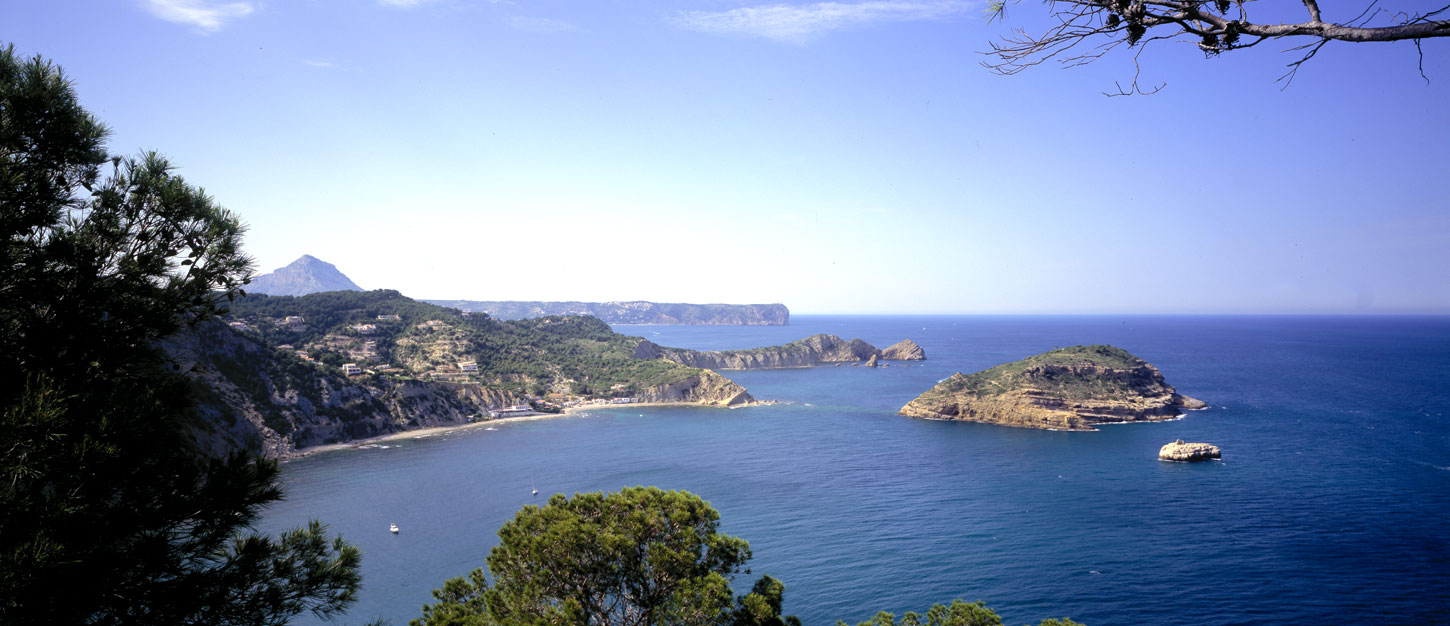

The Square of Master Stone Mason, Vicent de Gràcia
The garden which now occupies this little square, called “Jardin de Loreto” until recently, has been renamed the “Plaza de Vicent de Gràcia”, as Vicent Bisquert Riera (1884-1962) was popularly known. Previously, it was land that belonged to the Chapel called the “Virgen de Loreto”, one of the religious buildings located inside the city walls of Xàbia.
The Town of Xàbia was surrounded and protected by fortified walls until 1874, the year which marked the definitive demolition of the defensive walls which are now bypassed by ring roads today. That fortified wall premise, the second one possessed by the town, was built on an unknown date, probably at the end of the 15th century, a period of the town’s major demographic and economic growth. At the beginning of the 14th century, the early historical city centre of Xàbia had a defensive enclosure which framed a reduced urban space with a surface area of 4.38 ha.
The surface area of the newly extended town was 6.61 ha. and the perimeter of its fortified walls was 955 m. Five round towers were built to reinforce the gates and the wall; they flanked three entrances to the town and they were eventually equipped with artillery against potential pirate raids, which always arrived from the sea. The gates were closed at ten o’clock at night and they were opened again at sunrise.
On the 1st of December 1556, works began on the religious house and sanctuary of the “Virgen de Loreto”. At practically the same time, the first documented references were made about the Gate called “Puerta de la Mar”, located next to the sanctuary, a gate which had to be reinforced in 1639 due to the threats of pirate raids.
We are not aware of any image from the “Capilla de Loreto”. In a 19th century description, it is possible to read that the building was built in 1515. There was a large portico gallery with 3 naves buttressed by 8 columns, where the primary education classes were given and the director’s residence. A brief description of the chapel also states that it was a rectangular building, covered by a vault, buttressed by columns which comprised two naves with a “Mudéjar” style.
As we have already mentioned, this buildings was located next to the gate called “Puerta de la Mar”, the place where the population dedicated to sea trades was concentrated and it was comprised by 24 fishermen at the end of the 16th century. The district known as “Raval de la Mar” was created outside of the walls at the end of the 17th century. During the second half of the 18th century, this new neighbourhood had approximately 47 residents, which, applying a coefficient of 4 per family unit, represents a total of around 188 people. The majority of these citizens worked in trades related to the sea and fishing; and its chapel and the place where they were buried was the sanctuary called “Ermita de Loreto”. In fact, one of the few stories which mention the chapel are related to the fishing activity. On the 26th of August 1757, two ships from Begur (Catalonia) were sailing toward their home port from the Vera area (Murcia); at the height of the cape called Cap de Sant Antoni, a storm began to rock one of the ships and its four crew members drowned. Two of them were buried in the “Ermita de Loreto”.
The last story linked to this building describes its demolition. On the 12th of August 1881, a newspaper in Alicante published that due to the dilapidated condition of the building, one of its vaults had collapsed and its fall had killed a resident. For this reason, the demolition of said building was agreed to prevent additional misfortunes.
The land where the chapel was located became the first public garden a short time later. In this square in 1923, Vicent de Gràcia built a fountain using a large stone element from an old oil press (“almazara”) on which he placed an image of the Virgin Mary known as “Ntra. Sra. De Loreto” in homage to the temple which had existed there since the 16th century.










